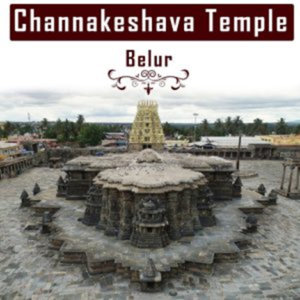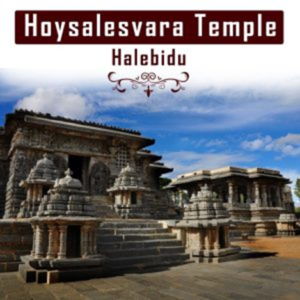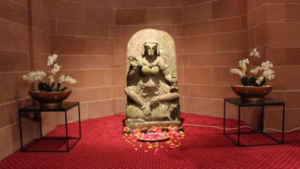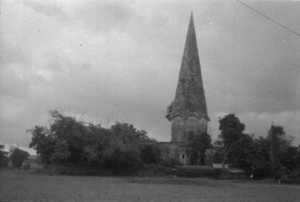ForumIAS announcing GS Foundation Program for UPSC CSE 2025-26 from 19 April. Click Here for more information.
ForumIAS Answer Writing Focus Group (AWFG) for Mains 2024 commencing from 24th June 2024. The Entrance Test for the program will be held on 28th April 2024 at 9 AM. To know more about the program visit: https://forumias.com/blog/awfg2024
Dear Friends,
This post is a part of our current affairs series for the UPSC IAS Prelims 2022. In this post, we have covered Art, architecture, and Culture in the news of the Architecture section. This post covers current affairs from Dec. 2021 to 15th March 2022. In the 2nd part, we will cover the rest of the current affairs from July 2021 to 31st April 2022.
Art and Culture in news 2021-22
Architecture of India
Contents
- 0.1 Architecture of India
- 0.2 To Read Other Current Affairs Compilations for UPSC Prelims 2022– Click here
- 1 Sacred Ensembles of Hoysala
- 2 Goat Head Yogini
- 3 Ramna Kali temple
- 4 Kashi Vishwanath Temple Corridor Project
- 5 Somnath Temple
- 6 Raigad Fort
- 7 Konark Sun Temple
- 8 India’s first Open Rock Museum on NGRI campus
- 9 Conference on Indian temple architecture ‘Devayatanam’
To Read Other Current Affairs Compilations for UPSC Prelims 2022– Click here
Sacred Ensembles of Hoysala
News: Hoysala Temples of Belur, Halebid, and Somnathapura in Karnataka have been finalised as India’s nomination for consideration as World Heritage for the year 2022-2023.
Note: The ‘Sacred Ensembles of the Hoysala’ have been on UNESCO’s tentative list since 2014.
About Hoysalas: The Hoysalas ruled a large part of modern-day Karnataka and parts of Andhra Pradesh and Tamil Nadu from the 10th to the 14th century.
During their reign, they built 100s of temples. In addition to Shaivite and Vaishnavite sects of Hinduism, the Hoysala rulers gave court recognition and status to Jainism.
About the Sacred Ensembles of Hoysala: Sacred Ensembles of Hoysala were built in the 12th-13th century. The sacred ensembles of the Hoysalas were far beyond temples for worship. They were extraordinary expressions of spiritual purpose and vehicles of spiritual practice and attainment.
Salient characteristics of Hoysala temple architectures:
- The architecture of the Hoysalas is a hybrid of the nagara style of temple architecture of north India and the Dravidian style from the South. The temples were built on platforms and had a star-shaped plan.
- A navaranga was usually included as a place for people to gather and participate in cultural programs.
- Kalyani or stepped wells are commonly found in the Hoysala sacred ensembles.
- The temple complex had rathabeedi or wide streets for processions and circumambulation of the deities on enormous chariots.
- The exterior walls of the numerous temples were intricately decorated with stone sculptures and carvings. These sculptures are rich with religious and cultural iconography depicting gods and goddesses, wars and victories, dance and music, hunting, games, processions, and the dress, jewelry, and daily life of people and scenes from the Ramayana, Mahabharata, and the Bhagavatham.
Chennakeshava temple at Belur and the Hoysaleshwara temple at Halebid have been recognised among the Hoysala masterpieces.

Chennakeshava Temple – Belur: Belur was the first capital city of the Hoysalas. Chennakeshava Temple is also referred to as Vijayanarayana Temple of Belur. It is a 12th-century Hindu temple in Karnataka.
The temple was commissioned by King Vishnuvardhana in 1117 CE, on the banks of the Yagachi River in Belur also called Velapura, an early Hoysala Empire capital.
The temple is devoted to Vishnu.
The richly sculptured exterior of the temple narrates scenes from the life of Vishnu and his reincarnations and the epics, Ramayana, and Mahabharata. However, some of the representations of Shiva are also included.

Hoysaleshwara Temple- Halebid: At the zenith of the Hoysala empire, the capital was shifted from Belur to Halebid which was then known as Dorasamudhra. Hoysaleswara temple, also referred to simply as the Halebidu temple, is a 12th-century Hindu temple dedicated to Shiva.
The temple was built in 1121CE during the reign of the Hoysala King, Vishnuvardhana Hoysaleshwara.
The temple is most well-known for the more than 240 wall sculptures that run all along the outer wall.
Goat Head Yogini
News: The Union Minister of Culture has announced that the stone idol of Goat Head Yogini that had been illegally removed from a temple in Lokhari, Banda, Uttar Pradesh is being returned to India.
About Goat Head Yogini: Goat headed Yogini is a 10th Century Stone Idol. It originally belonged to a group of stone deities in sandstone and was installed in Lokhari temple.

The idol had been illegally removed from a temple in Lokhari, Banda, Uttar Pradesh in the 1980s.
In October 2021, the idol was discovered in London. And now it is being returned to the Archaeological Survey of India, New Delhi.
A similar sculpture of the buffalo-headed Vrishanana Yogini, was recovered and repatriated by Embassy of India, Paris in 2013. It was also stolen from the same temple in Lokhari village.
Who are Yoginis?
Yoginis are a group of powerful female divinities associated with the Tantrik mode of worship. They are worshipped as a group, often 64, and are believed to possess infinite powers.
Ramna Kali temple
News: The President of India has inaugurated the reconstructed Ramna Kali temple in Ramna, Bangladesh.

About Ramna Kali temple: Ramna Kali Temple is a temple in Dhaka. The temple is dedicated to the Goddess Kali and is believed to have been built during the Mughal period.
The temple gained prominence in the early 20th century when the renowned saint Ma Anandamayi built her ashram within the temple premises. Anandamayi was popularly addressed as “Shahbag-er ma”, or the Mother of Shahbag.
The temple was destroyed in 1971 by the Pakistani Army during the Bangladesh Liberation War. In 2017, the Government of India had pledged money for reconstruction efforts of the temple.
And now the temple has been inaugurated by the President of India after reconstruction got completed.
Kashi Vishwanath Temple Corridor Project
News: The Prime Minister of India has inaugurated the Kashi Vishwanath Temple Corridor project.
About Kashi Vishwanath Temple Corridor project: The Kashi Vishwanath Temple Corridor project in Varanasi connects the iconic Kashi Vishwanath temple and the ghats along the river Ganga.
The project will ensure easy movement of pilgrims and devotees between the ghats and the temple. Earlier, they had to pass through congested streets to reach the temple. The corridor will be 320 km long and 20 km wide walkway.
This improvement of the infrastructure in Varanasi is expected to give a boost to tourism in the region.
About Kashi Vishwanath Temple: Kashi Vishwanath Temple is one of the most famous Hindu temples dedicated to Lord Shiva. It is located in Varanasi, Uttar Pradesh. The main deity is known by the name Vishvanatha or Vishveshvara meaning Ruler of The Universe.
The Temple stands on the western bank of the holy river Ganga. It is one of the twelve Jyotirlingas, the holiest of Shiva Temples. The temple was rebuilt and renovated by Maharani Ahilyabai Holkar of the Indore in the year 1780.
A Jyotirlinga is a shrine where Lord Shiva is worshipped in the form of a Jyotirlingam, a holy representation of Lord Shiva. Other 11 Jyotislingas include;
- Somnath Jyotirlinga in Gir, Gujarat
- Mallikarjuna Jyotirlinga in Srisailam, Andhra Pradesh
- Mahakaleshwar Jyotirlinga in Ujjain, Madhya Pradesh
- Omkareshwar Jyotirlinga in Khandwa, Madhya Pradesh
- Baidyanath Jyotirlinga in Deoghar, Jharkhand
- Bhimashankar Jyotirlinga in Maharashtra
- Ramanathaswamy Jyotirlinga in Rameshwaram, Tamil Nadu
- Nageshwar Jyotirlinga in Dwarka, Gujarat
- Trimbakeshwar Jyotirlinga in Nasik, Maharashtra
- Kedarnath Jyotirlinga in Rudraprayag, Uttarakhand
- Ghrishneshwar Jyotirlinga in Aurangabad, Maharashtra
Somnath Temple
News: The Prime Minister has inaugurated the new Circuit House near Somnath Temple, Gujarat. The circuit house was needed as there was no guest house near the temple.
About Somnath Temple: Somnath temple is located on the western coast of Gujarat. It is believed to be the first among the twelve jyotirlinga shrines of Shiva.
It was reconstructed several times in the past after repeated destruction by several Muslim invaders and rulers. This temple is also referred to as Ahilyabai Temple since it was built by Queen Ahilyabai of Indore when she found that the old temple was in ruins.
The present temple was reconstructed in the Chaulukya style of Hindu temple architecture, with a shikhara nearly 50 m tall. It was completed in May 1951. The reconstruction was completed by Vallabhbhai Patel.
The temple’s imposing architecture includes intricate carvings, silver doors, an impressive Nandi idol and the central shivalinga.
Chalukyan Style of temple architecture: It is a blend of Nagara and Dravidian styles, and evolved its own distinctive style. It is sometimes referred to as the ‘Vesara’ style of architecture. Style included vimana of Dravidian style and faceted walls of Nagara style. The Ladh Khan and Durga temples at Aihole are the best examples of Chalukyan architecture.
Raigad Fort
News: The President of India visited the Raigad Fort and paid the tribute to Chhatrapati Shivaji Maharaj.
About Raigad Fort: It is a hill fort situated in the Raigad district in Maharashtra. The British Gazette states the fort was known to early Europeans as the Gibraltar of the East.
Its distinctive feature is a mile and a half flat top, which has adequate room for buildings. In its prime, the fort had 300 stone houses and a garrison of 2,000 men.
Brief history of Raigad Fort: The fort, which was earlier called Rairi, was the seat of the Maratha clan Shirke in the 12th century.
The fort changed hands a number of times from the dynasty of Bahaminis to the Nizam Shahis and then the Adil Shahis.
In 1656, Chhatrapati Shivaji captured it. The fort not only helped Shivaji in challenging the supremacy of the Adil Shahi dynasty but also opened up the routes toward Konkan for the extension of his power. In 1662, Shivaji formally changed the fort’s name to Raigad.
Importance of Raigad Fort
Raigad fort became the seat of Chhatrapati Shivaji’s government by 1664.
Also, Shivaji was coronated as Chhatrapati at Raigad by Gagabhatt.
Now the Maharashtra Government is also seeking the World Heritage Site tag for Raigad Fort along with 13 other forts from the era of 17th century Maratha king Chhatrapati Shivaji Maharaj on the theme of Maratha Military Architecture in Maharashtra.
Konark Sun Temple
News: Odisha plans to make Konark a 100% solar town and place it among India’s first few zero-emission cities or towns.

About Konark Sun Temple: It was built in the 13th century by King Narasimhadeva I (AD 1238-1264) of the Eastern Ganga Dynasty and is located near Puri, Odisha. The temple is a classic example of the Odisha style of Architecture or Kalinga Architecture.
The temple forms part of the golden triangle of Odisha, along with Puri and Bhubaneswar.
It was given the status of a World Heritage Site in 1984 by UNESCO.
The temple is carefully oriented towards the east so that the first rays of sunrise strike the principal entrance. The temple was used as a navigational point by European sailors. They referred to it as the ‘Black Pagoda’ due to its dark color and its magnetic power that drew ships to the shore and caused shipwrecks.
Kalinga architecture: It is a subset of the nagara style of Hindu temple architecture, which showcases this style in all its purity. The nagara style is characterized by a huge curvilinear tower (shikhara, inclining inwards and capped), square ground plan, containing a sanctuary and assembly hall (mandapa)
India’s first Open Rock Museum on NGRI campus
News: Union Minister of State for Science & Technology has inaugurated India’s first open rock museum on the campus of the CSIR-National Geophysical Research Institute (NGRI) in Hyderabad.
About the museum
Aim: To educate and enlighten the masses about several lesser-known facts about rocks.
The museum displays around 35 different types of rocks from different parts of India with ages ranging from 3.3 Billion years to around 55 Million years of the Earth’s history.
These rocks represent the deepest part of the earth up to 175 km of distance from the surface of the earth.
The rocks have been sourced from Odisha, Tamil Nadu, Uttarakhand, Jharkhand, Jammu & Kashmir, and others.
Conference on Indian temple architecture ‘Devayatanam’
News: The Union Minister for Culture inaugurated one of its kind conference on Indian temple architecture, ‘Devayatanam’.
About Devayatanam
Organized by: Archaeological Survey of India (ASI) of Ministry of Culture.
Purpose: It is a conference on the journey of Indian Temple Architecture, held at Hampi, Karnataka.
Aim:
It provides a platform to discuss, deliberate and disseminate to the world the philosophical, religious, social, economic, technical, scientific, art and architectural aspects of the Indian temples.
It also aims to initiate a dialogue on the evolution and development of the various styles of temple architecture such as the Nagara, Vesara, Dravida, Kalinga and others.
Other important aspects linked to conference
The conference is in line with 5 V’s, i.e. Vikas (development), Virasat (heritage), Vishwas (trust), Vignan (knowledge) of Prime Minister to make India a vishwaguru.




